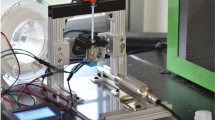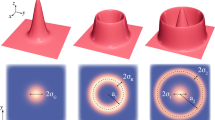Abstract
Warpage reduction is one of the important issues in plastic injection molding (PIM). In order to resolve this issue, there are mainly two ways to reduce warpage: One is to design the mold, and the other is to optimize the process parameters such as the mold temperature, the melt temperature, and so on. In this paper, the latter approach is employed. In particular, variable pressure profile approach is adopted for the warpage reduction. Besides the variable pressure profile, the melt temperature and the mold temperature are taken as the design variables. Also, short shot that the melt plastic is not filled into the cavity is one of the fatal defects in PIM. Unlike the literature, in this paper, the short shot is handled as the design constraint. PIM simulation is generally so costly and time consuming, and then the surrogate-based optimization technique is used. The radial basis function (RBF) network is used throughout sequential approximate optimization (SAO) procedure. Moldex3D is used for PIM simulation. In order to compare the effectiveness of the variable pressure profile, the traditional process parameter optimization considered in the literature is also carried out. Numerical results show that the variable pressure profile is one of the effective ways to warpage reduction compared to the traditional process parameter optimization.
Similar content being viewed by others
References
Sadeghi BHM (2000) A BP-neural network predictor model for plastic injection molding process. J Mater Process Technol 103:411–416
Huang MC, Tai CC (2001) The effective factors in the warpage problem of an injection-molded part with a thin shell feature. J Mater Process Technol 110:1–9
Yarlagadda PKDV, Khong CAT (2001) Development of a hybrid neural network system for prediction of process parameters in injection moulding. J Mater Process Technol 118:110–116
Bikas A, Pantelelis N, Kanarachos A (2001) Computational tools for the optimal design of the injection moulding process. J Mater Process Technol 122:112–126
Shi F, Lou ZL, Lu JG, Zhang YQ (2003) Optimisation of plastic injection moulding process with soft computing. Int J Adv Manuf Technol 21:656–661
Kurtaran H, Ozcelik B, Erzurumlu T (2005) Warpage optimization of a bus ceiling lamp base using neural network and genetic algorithm. J Mater Process Technol 169:314–319
Ozcelik B, Erzurumlu T (2006) Comparison of the warpage optimization in the plastic injection molding using ANOVA, neural network model and genetic algorithm. J Mater Process Technol 171:437–445
Changyu S, Lixia W, Qian L (2007) Optimization of injection molding process parameters using combination of artificial neural network and genetic algorithm method. J Mater Process Technol 183:412–418
Yin F, Mao H, Hua L, Guo W, Shu M (2011) Back propagation neural network modeling for warpage prediction and optimization of plastic products during injection molding. Mater Des 32:1844–1850
Yin F, Mao H, Hua L (2011) A hybrid of back propagation neural network and genetic algorithm for optimization of injection molding process parameters. Mater Des 32:3457–3464
Kurtaran H, Erzurumlu T (2006) Efficient warpage optimization of thin shell plastic parts using response surface methodology and genetic algorithm. Int J Adv Manuf Technol 27:468–472
Chiang KT, Chang FP (2007) Analysis of shrinkage and warpage in an injection-molded part with a thin shell feature using the response surface methodology. Int J Adv Manuf Technol 35:468–479
Mathivanan D, Parthasarathy NS (2009) Sink-mark minimization in injection molding through response surface regression modeling and genetic algorithm. Int J Adv Manuf Technol 45:867–874
Gao Y, Wang X (2008) An effective warpage optimization method in injection molding based on the Kriging model. Int J Adv Manuf Technol 37:953–960
Shie JR (2008) Optimization of injection molding process for contour distortions of polypropylene composite components by a radial basis neural network. Int J Adv Manuf Technol 36:1091–1103
Jones D, Schonlau M, Welch WJ (1998) Efficient global optimization of expensive black-box functions. J Glob Optim 13:455–492
Gao Y, Wang X (2009) Surrogate-based process optimization for reducing warpage in injection molding. J Mater Process Technol 209:1302–1309
Li C, Wang FL, Chang YQ, Liu Y (2010) A modified global optimization method based on surrogate model and its application in packing profile optimization of injection molding process. Int J Adv Manuf Technol 48:505–511
Shi H, Gao Y, Wang X (2010) Optimization of injection molding process parameters using integrated artificial neural network model and expected improvement function method. Int J Adv Manuf Technol 48:955–962
Deng YM, Zhang Y, Lam YC (2011) A hybrid of mode-pursuing sampling method and genetic algorithm for minimization of injection molding warpage. Mater Des 31:2118–2123
Zhou J, Turng LS (2007) Process optimization of injection molding using an adaptive surrogate model with Gaussian process approach. Polym Eng Sci 47(5):684–694
Xia W, Luo B, Liao XP (2011) An enhanced optimization approach based on Gaussian process surrogate model for process control in injection molding. Int Adv Manuf Technol 56(9–12):929–942
Erzurumlu T, Ozcelik B (2006) Minimization of warpage and sink index in injection-molded thermoplastic parts using Taguchi optimization method. Mater Des 27:853–861
Oktem H, Erzurumlu T, Uzman I (2007) Application of Taguchi optimization technique in determining plastic injection molding process parameters for a thin-shell part. Mater Des 28:1271–1278
Oktem H (2012) Optimum process conditions on shrinkage of an injected-molded part of DVD-ROM cover using Taguchi robust method. Int J Adv Manuf Technol 61:519–528
Chen WC, Wang MW, Chen CT, Fu GL (2009) An integrated parameter optimization system for MISO plastic injection molding. Int J Adv Manuf Technol 44:501–511
Lam YC, Brittom GA, Liu DS (2004) Optimisation of gate location with design constraints. Int J Adv Manuf Technol 24:560–566
Castro CE, Rios MC, Castro JM, Lilly B (2007) Multiple criteria optimization with variability considerations in injection molding. Polym Eng Sci 47(4):400–409
Kitayama S, Arakawa M, Yamazaki K (2011) Sequential approximate optimization using radial basis function network for engineering optimization. Optim Eng 12(4):535–557
Nakayama H, Arakawa M, Sasaki R (2002) Simulation-based optimization using computational intelligence. Optim Eng 3:201–214
Kitayama S, Yamazaki K (2011) Simple estimate of the width in Gaussian kernel with adaptive scaling technique. Appl Soft Comput 11(8):4726–4737
Author information
Authors and Affiliations
Corresponding author
Rights and permissions
About this article
Cite this article
Kitayama, S., Onuki, R. & Yamazaki, K. Warpage reduction with variable pressure profile in plastic injection molding via sequential approximate optimization. Int J Adv Manuf Technol 72, 827–838 (2014). https://doi.org/10.1007/s00170-014-5697-7
Received:
Accepted:
Published:
Issue Date:
DOI: https://doi.org/10.1007/s00170-014-5697-7




